JRDG Company Special – Model 5
1986-1991
Retail Price unknown
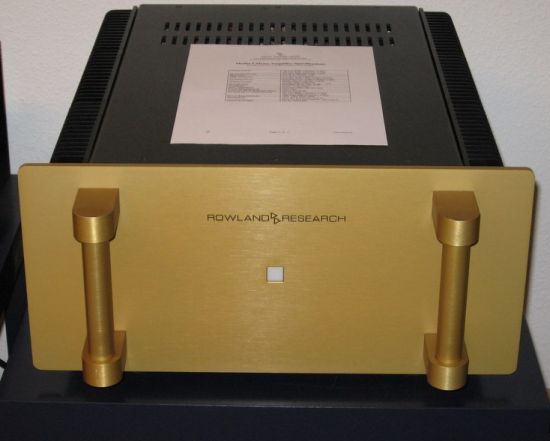
The model 5 can be seen as a more affordable but still hugely powerful stereo version of the model 7. You can tell model 7 and model 5 apart by looking at the handles’ shape: the model 7 (not pictured) has square parts while the model 5 has rounded parts.
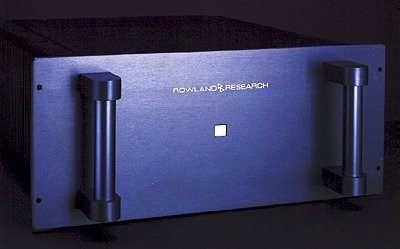
The model 5 was available in gold, black, and silver
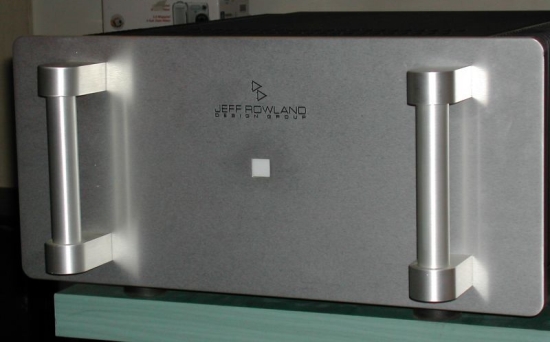
And there was also an option for rackmount holes as can be seen below
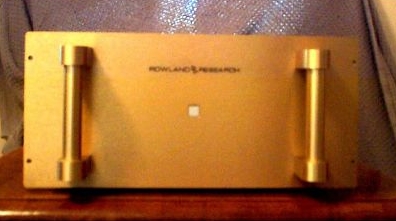
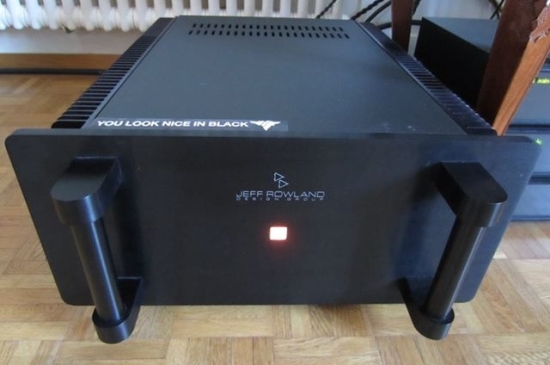
Like its bigger brother the model 7, the model 5 was available in a few versions that are functionally different. From the information that I found there are at least 3 versions with respect to back panel functionality. The below two pics for example have double speaker connector strips.
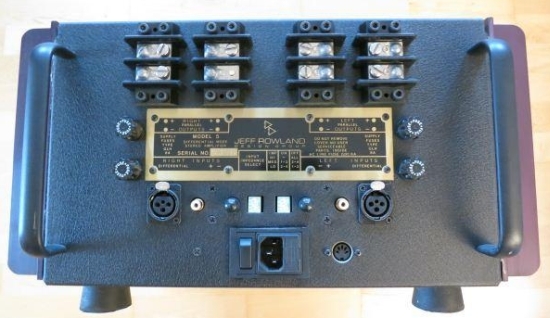
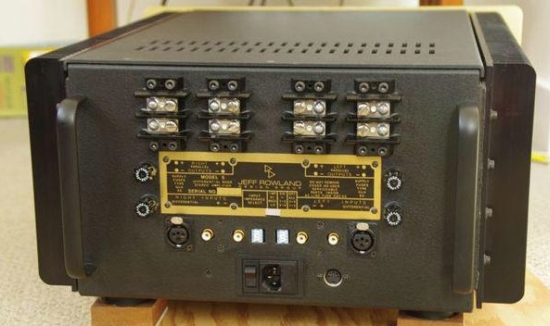
The two pics below show a version that has both metal strips and knobs for speaker connection.
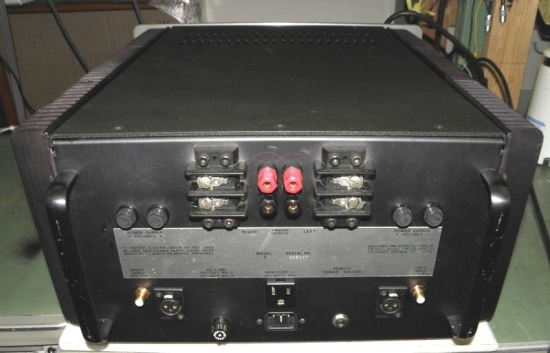
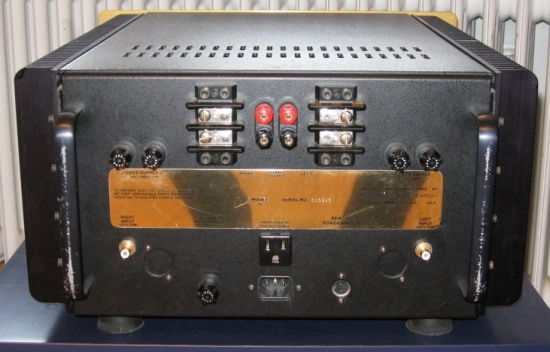
The picture above shows a version that only has cinch inputs, no XLR.
Originally Jeff Rowland amps such as the model 1, model 3, and model 7 used strips with screws for connecting loudspeaker cables. This worked fine for bare wire and spades but would not play ball with bananas. Also, the screws were prone to damage after being tightened and loosened multiple times and would eventually wear out either on the head (making the screwdriver lose grip) or even in the thread. The thing is that the screw sizes used are US standard and these are not easily available in Europe.
More information about JRDG speaker binding posts
On the inside, too, there are distinctions pointing to several different versions having been available.
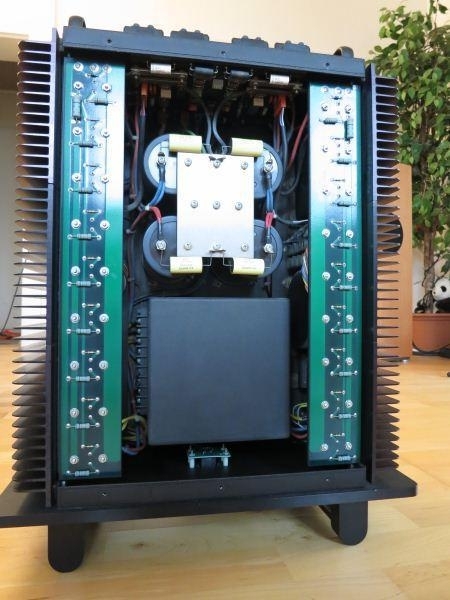
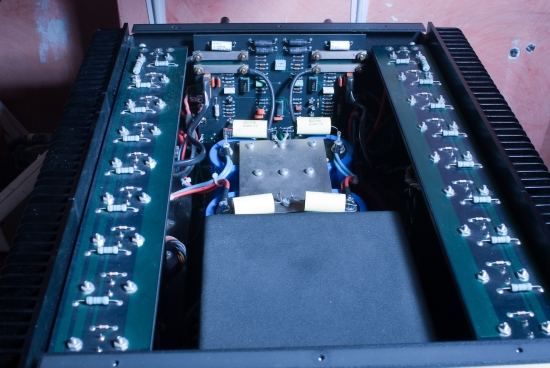
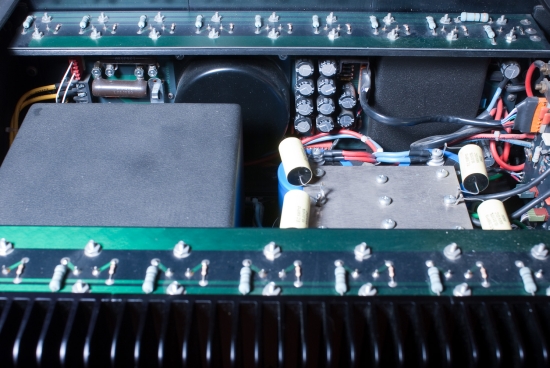
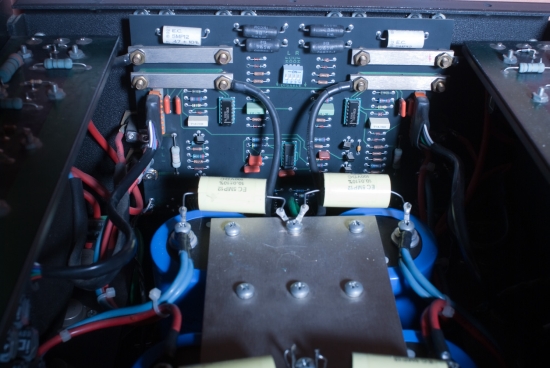
The above pics show a model 5 with 4 extra bypass capacitors on top of the big main caps but the picture below shows a model without them.
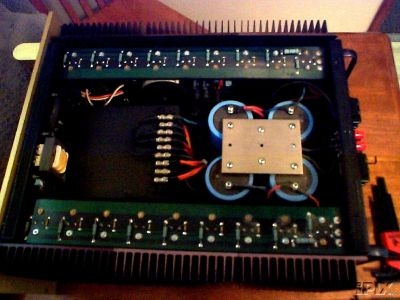
Below is a picture showing a third version with not only the 4 bypass capacitors but also some extra electronics near the (knob) speaker terminals.
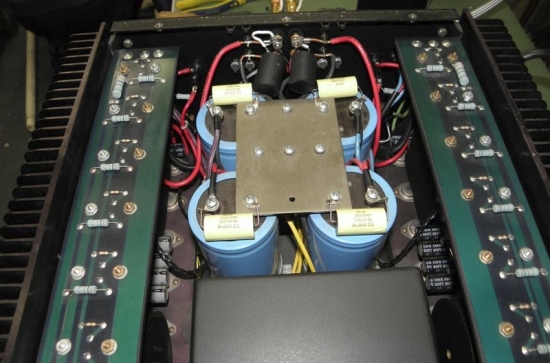
Below is a model 5 with its side panels opened as would be needed for repairs. Although Rowland amps in general rarely need service, it’s admirable how user-friendly this amp is put together.
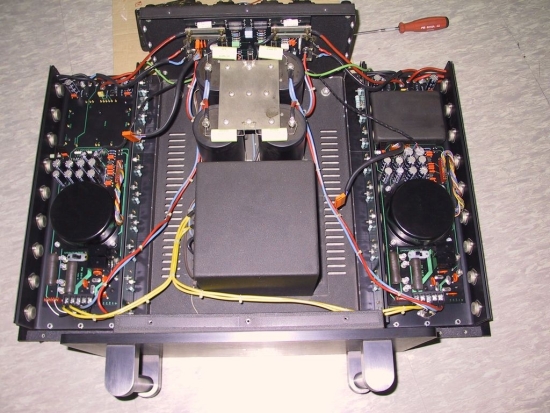
Model 5 Features
Lack of overall or nested negative feedback eliminates time-domain distortion.
Proprietary distortion canceling techniques minimize amplitude-related distortions.
Each transistor individually tested and matched for optimum operating characteristics.
Constant output impedance is maintained over the entire audio range, allowing for universal compatibility with associated equipment.
The large number of high-speed bipolar output transistors provides uncompromising reliability and eliminates the need for electronic protection circuitry.
A single voltage amplification stage utilizes field effect transistors (operating in transconductance mode), which increases low-level signal recognition.
The absence of capacitors, inductors, fuses and protection circuitry throughout the signal path eliminates the adverse effects of these devices.
A specially designed toroidal power transformer is supported by the substantial output stage capability.
All critical circuitry is encapsulated in a thermally-conductive epoxy to ensure excellent thermal stability, mechanical integrity and to facilitate ease of service.
Model 5 Technical Specifications
Output power
150 watts RMS continuous, 8 ohms
300 watts RMS continuous, 4 ohms
475 watts RMS continuous, 2 ohms
Power Bandwidth
0.15 Hz to 250 kHz, -3 dB
Slew Rate
75 volts per microsecond
THD and Noise
Less than .03%, 1 kHz, 8 ohms, 20 watts
Less than .075%, 1 kHz, 8 ohms, 60 watts
Damping Factor
Greater than 175, 20 Hz to 20 kHz, 8 ohms
Greater than 60, 100 kHz, 8 ohms
Output Current
40 amps peak, continuous
90 amps peak, 0.1 ohm, 20 msec, 1 kHz
Overall Gain
Selectable: 20, 26, 29.5, 32 dB
Sensitivity
36 mV, 1 watt, 8 ohms
Input Impedance
Selectable: 100k, 20k, 600 ohms
Common Mode Rejection
Ratio Greater than 90 dB
Bridged Mono Output Power
550 watts RMS continuous, 8 ohms
800 watts RMS continuous, 4 ohms
1000 watts RMS continuous, 2 ohms
Power Requirements
100V-240V
More Jeff Rowland
Jeff Rowland Company Special Main Page
Jeff Rowland Company Special Power Amplifiers
I have 5 power amplifiers. My best in the 1988 Rowland Research model 5. Balance and RCA version. Sounds like tube amplifier, smooth and strong.
Hallo Christiaan and everybody; i’m a Jeff Rowland addicted and a i recently bought a Model 5 MK2, with double speaker connector (metal strips) and four Rca input… can someone explain to me why 4 rca inputs? Thanks for the help! Stef (I still have to listen to it, first I would like to avoid doing damage; the guy who sold it to me had only connected 2 rcas.
Hi Stef, I think the four RCAs are two stereo pairs. In one pair, one is for positive phase and the other is for negative phase. This is a means of connecting a balanced signal with RCAs instead of XLR connectors. You probably could indeed suffice with only connecting one or the other. Note that the absolute phase will change depending on the input you use. The ideal one depends on what pin on your source is non-inverted. In case of doubt just use one after the other and use the one you think sounds best.
Another possibility is that the second set or RCAs are loopthroughs (connected in parallel) for connecting another amplifier. In that case, you should connect only one of the two per side.
Perfekt, vielen Dank Christian! Da mir der Besitzer auch die vier Audioquest-Cinch-Kabel gegeben hat, mit denen er den Verstärker an den Vorverstärker angeschlossen hat (unter Verwendung der beiden Ausgänge des Consummate-Vorverstärkers), kann ich daher auch dann von dem symmetrischen Signal mit Cinch-Anschlüssen profitieren, wenn ich es trage habe keine XLRs; Optimal! Danke, wenn ich es nach den technischen Prüfungen verwende, werde ich ein Feedback schreiben